the Unique Benefits And Different Types of Yoga!
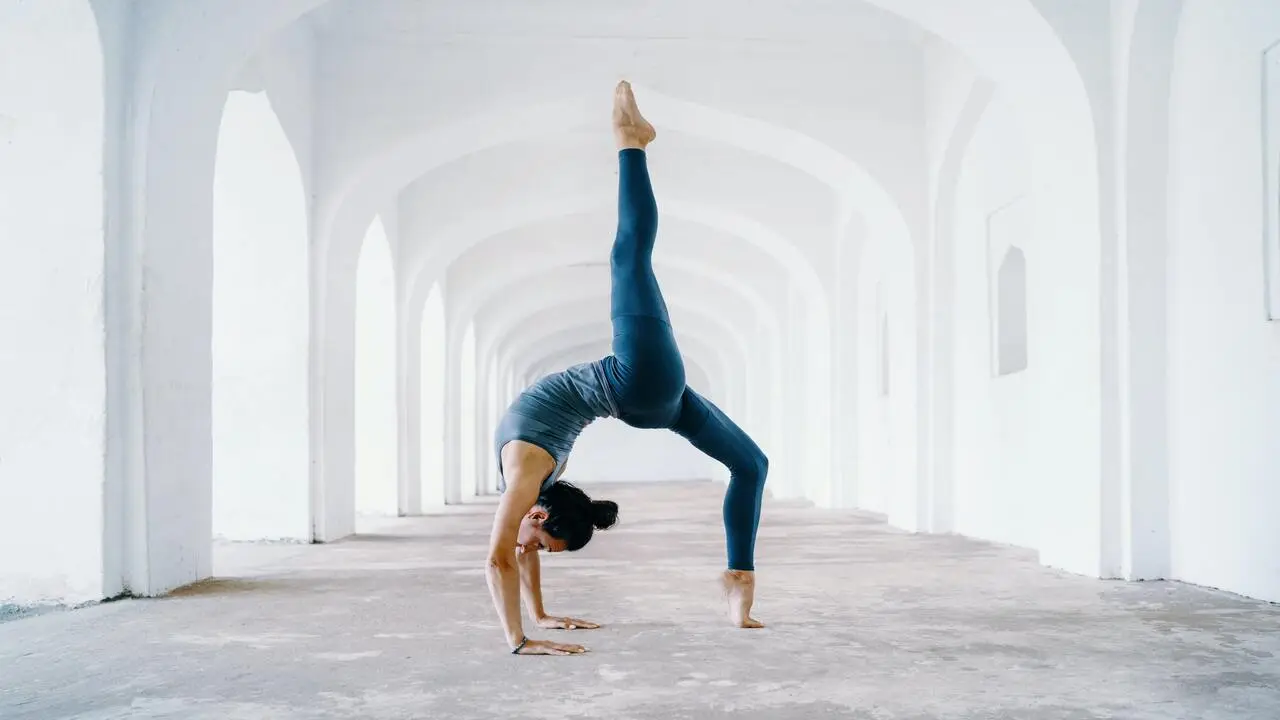
As the sun rises over the horizon, casting a warm glow over the world, yogis around the world are awakening to a new day, ready to embark on their journey toward physical, mental, and spiritual well-being.
At the heart of this journey lies yoga, a practice that has been embraced by millions around the world for its transformative power and its ability to bring balance and harmony to our lives.
In this article, we will explore the different types of yoga and their unique benefits, showing how this ancient practice can transform your body, mind, and spirit, and help you discover a way of life that brings health, wellness, and inner peace.
Yoga Style: A Way of Life
At its core, yoga is not just a physical practice, but a way of life that encompasses all aspects of our being. From the physical postures, or asanas, to the breathwork, or pranayama, to the meditation and mindfulness practices, yoga offers a holistic approach to achieving balance and harmony in our lives.
There are many different types of yoga, and each style of yoga has its unique approach and benefits. Let us explore some of the most popular types of yoga and what makes them special.
Hatha Yoga: The Foundational Practice for Your Journey in Yoga
If you seek to embark on a truly enriching journey in yoga, look no further than Hatha Yoga. Esteemed as the essential groundwork for all other forms of yoga, Hatha Yoga has gained a reputation as the go-to practice for novices and experts alike.
The physical postures, or asanas, fused with the art of breathwork, or pranayama, offer a distinctive combination that not only fosters robustness and equilibrium in the physique but also heightens mental perspicuity and reduces stress levels. Hatha Yoga’s popularity stems from its versatility and adaptability to conform to individual preferences and requirements.
By incorporating Hatha Yoga into your daily routine, you can establish a resilient foundation for your expedition in yoga. Through consistent and dedicated practice, you will perceive substantial enhancements in both your physical health and mental well-being, ultimately leading to a more fulfilling and contented life.
Hatha Yoga presents a comprehensive practice that is ideal for individuals who seek a transformative and invigorating experience.
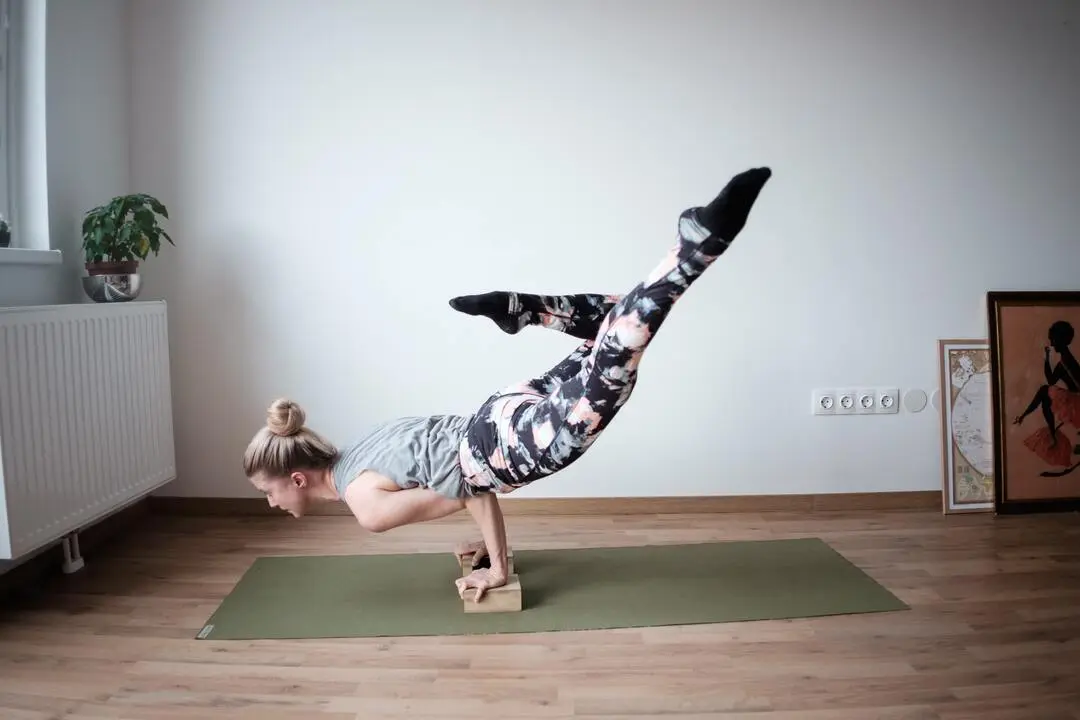
Ashtanga Yoga: An Invigorating and Exacting Discipline
Ashtanga Yoga is a type of yoga that’s all about following a special set of moves in a certain order. It’s known for being a bit tough, but it’s great for making you strong and flexible, and for improving your stamina. This yoga style also helps you think more clearly and stay focused.
When you do Ashtanga Yoga, you go through a series of poses. It’s important to do these poses carefully and with purpose. While you’re moving from one pose to the next, keeping your breathing steady and smooth is key. This helps you feel calm and focused, and it’s good for both your body and your mind.
The poses in Ashtanga Yoga are arranged in a way that challenges everyone, no matter how fit they are. Each pose is like a step leading to the next one. You start with basic poses like the Sun Salutations, and as you get better, you move on to more advanced ones that need more balance and strength.
Practicing Ashtanga Yoga is about challenging yourself and going beyond what you think you can do. It’s not just about being physically strong; it’s also about mental strength. If you stick with it, you’ll feel more energetic, be more aware of yourself, and learn a lot about your abilities.
Yin Yoga: The Body Challenge
Yin Yoga, a practice that entails prolonged, passive poses, penetrates our body deeply. This form of yoga focuses on the connective tissues that include ligaments, bones, the deep fascia networks, joints, and meridians, unlike Yang Yoga like Vinyasa Yoga, which concentrates on muscles.
In terms of energy, Yin Yoga enhances the flow of chi in our organs, in contrast to the muscles targeted by Yang Yoga. A healthy body comprises healthy muscles and healthy organs, which Yin Yoga helps improve. Furthermore, Yin Yoga provides emotional and mental health benefits that are truly remarkable.
Vinyasa Yoga: A Guide to Its Flow and Benefits
Vinyasa Yoga is like a dance, blending movements and breath into a smooth flow. This style is great for building strength, making you more flexible, and helping you relax.
Imagine moving from one pose to another gracefully, each move connected with your breathing. This not only makes your body stronger and more bendy but also calms your mind.
In Vinyasa Yoga, no two classes are the same. You’ll be moving a lot, so expect to feel like you’re doing a fun workout. The teacher will guide you through different poses, each linked with your breath. This flow keeps your mind focused and helps reduce stress.
If you’re new to Vinyasa Yoga, don’t worry about being perfect. It’s all about your own pace and style. And choosing a yoga mat? Look for one that’s comfy and non-slip, so you can focus on your yoga without sliding around.
What is Vinyasa Yoga?
Vinyasa Yoga is a dynamic and flowing practice that synchronizes movement with breath. In Sanskrit, “vinyasa” means “to place in a special way,” which refers to the sequence of poses that flow from one to the next continuously and smoothly. Each movement is linked to an inhale or exhale, creating a moving meditation that allows practitioners to connect with their body, breath, and mind.
One of the key features of Vinyasa Yoga is its emphasis on transitions between poses. Rather than holding poses for an extended period, as in other styles of yoga, Vinyasa Yoga encourages a continuous flow of movement. This creates a cardiovascular workout that builds heat in the body and strengthens the muscles, while also improving flexibility and balance.
Benefits of Practicing Vinyasa Yoga
Vinyasa Yoga offers a range of physical and mental benefits, making it a popular choice for practitioners of all levels. Some of the benefits of practicing Vinyasa Yoga include:
What to Expect in a Vinyasa Yoga Class
In a Vinyasa Yoga class, you start by taking a moment to breathe deeply and think about your goals for the class.
This helps you get ready and focused. Then, you’ll move through different yoga poses that flow smoothly from one to the next, like a dance. Each pose is connected to your breathing, and every new movement builds on the last one.
You’ll try various poses, including somewhere you stand, sit, or even go upside down. Don’t worry if some poses seem tough – your yoga teacher will show you different ways to do each pose, making sure it’s right for your level.
At the end of the class, there’s a relaxing time when everyone lies down quietly. This is your chance to relax your body and mind after all the movements.
In Vinyasa Yoga, you get to explore different yoga styles and practices, making it a fun and dynamic experience. Whether you’re just starting or have been doing yoga for a while, you’ll find something new and exciting in every class.

Choosing the Right Yoga Mat for Your Vinyasa Yoga Practice
A good yoga mat is an essential tool for any yoga practitioner, providing cushioning and traction for poses and transitions. When choosing a yoga mat for your Vinyasa Yoga practice, consider the following factors:
Yoga is an amazing journey, and Vinyasa Yoga is one of the coolest styles out there! It’s like a flowing dance, where you move from one pose to another, syncing with your breath. This style isn’t just about being flexible; it’s also about finding peace and getting stronger, both in your body and mind.
Now, let’s talk about the gear you need – mainly, the yoga mat. Picking the right mat is super important for your yoga practices. You’ve got lots of choices: mats made from natural rubber, synthetic rubber, PVC, and even cork. Here’s a quick guide:
When you’re picking a class or a teacher for Vinyasa Yoga, find someone who knows their stuff and can adapt the poses for beginners or yoga pros. A good teacher makes all the difference!
Remember, yoga isn’t just about doing poses; it’s about connecting with yourself. When you roll out your mat and start your Vinyasa flow, you’re on a path to feeling great, both inside and out. So, take a deep breath, find your flow, and enjoy every moment of your yoga journey! 🧘🧘♂️🌟
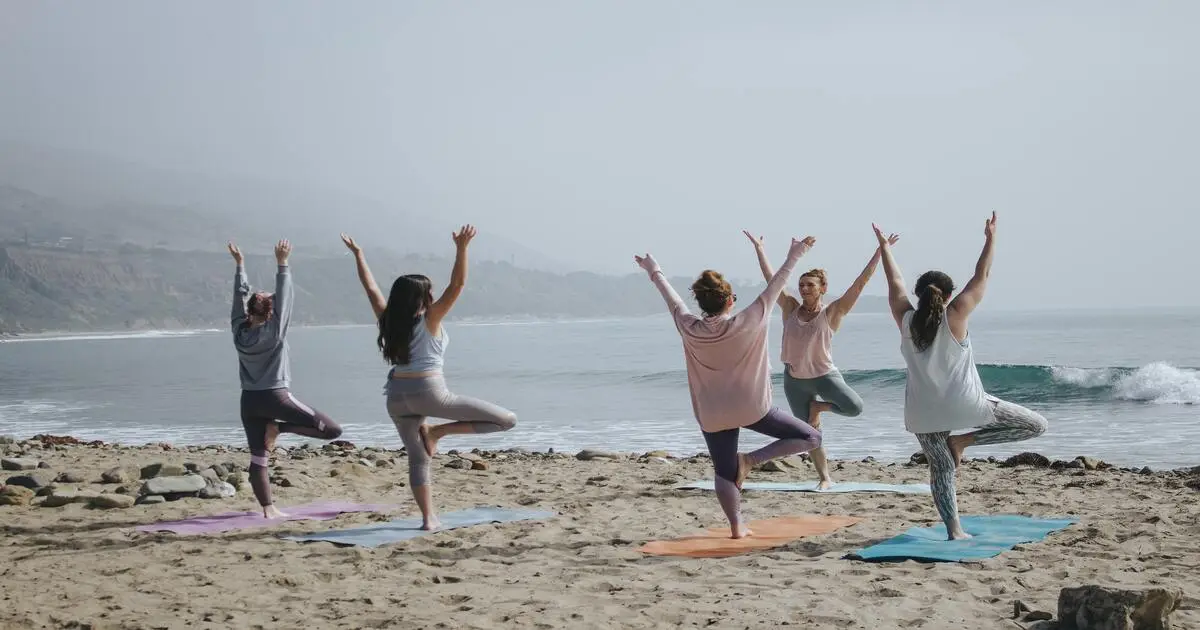
Kundalini Yoga: A Spiritual and Energetic Discipline
Kundalini Yoga is a vibrant and deeply spiritual form of yoga that revolves around awakening the dormant energy coiled at the base of the spine, known as Kundalini energy.
With its focus on dynamic movements, breathwork, and meditation, Kundalini Yoga offers a pathway to profound spiritual awakening, heightened self-awareness, and a deep sense of unity with the cosmos.
This unique approach to spiritual growth emphasizes the activation of Kundalini energy, believed in traditional Indian philosophy to be nestled at the base of the spine and accessible through dedicated yoga practice.
Kundalini energy is an awe-inspiring force with the potential to unlock profound spiritual experiences, but it demands careful and skilled guidance for its safe awakening and integration.
Kundalini Yoga comprises various practices designed to activate the Kundalini energy and balance the chakras, or energy centers, of the body. The movements are often intense, dynamic, and diverse, ranging from repetitive motion to stillness, asanas to mudras, and pranayama to kriyas.
The breathwork in Kundalini Yoga is central to the practice, as it helps to oxygenate the body and increase energy flow. Meditation in Kundalini Yoga is an integral aspect that utilizes mantras, mudras, and visualizations to quiet the mind, elevate consciousness, and open the heart.
The ultimate aim of Kundalini Yoga is to awaken the Kundalini energy and allow it to rise through the chakras to the crown of the head, resulting in a state of profound union with the divine.
This awakening can lead to various benefits, including increased awareness, clarity, and creativity, a deeper sense of purpose and meaning, and improved physical and mental health.
In conclusion, Kundalini Yoga is a profound and transformative practice that has the potential to unlock latent potential and facilitate personal evolution.
By tapping into the power of the Kundalini energy, practitioners can cultivate greater spiritual awareness, connection to the universe, and a more fulfilling sense of purpose in life.
Relax Deeply with Restorative Yoga: A Practice for Total Support and Relaxation
If you’re looking to unwind and achieve a sense of deep relaxation, restorative yoga may be just what you need. This gentle and slow-paced practice involves holding poses for longer periods while being fully supported by props, like blocks, bolsters, blankets, and straps.
In restorative yoga, the focus is on achieving physical, mental, and emotional relaxation by fully relaxing into each pose without any strain or pain. As a result, this practice is excellent for those looking to balance out an active yoga schedule or simply take a break when feeling under the weather.
The use of props is crucial in restorative yoga, as they help to fully support the body in each pose, allowing for complete relaxation. You’ll find yourself holding each pose for an extended period, promoting deep relaxation and a sense of calm.
One of the key benefits of restorative yoga is that it stimulates the parasympathetic nervous system, which promotes a relaxation response and reduces stress in the body.
This system is responsible for slowing your heart rate and breath, as well as increasing blood flow to your vital organs, among other things. As a result, practicing restorative yoga can help you feel calmer and more centered, reducing stress and anxiety.
However, it’s important to note that during restorative yoga, you may experience some emotional discomfort or vulnerability. This is because the practice encourages a sense of motionlessness and shapelessness, which can be challenging for some. If this happens, simply stay with your breath and allow any discomfort to pass.
Restorative yoga is a powerful tool for achieving deep relaxation, reducing stress, and promoting overall well-being. By fully surrendering to each pose and allowing yourself to be fully supported, you can experience a sense of calm and tranquility that will stay with you long after your practice is over.
So, next time you’re feeling overwhelmed or stressed, consider giving restorative yoga a try – your mind and body will thank you!
Iyengar Yoga: A Precise and Therapeutic Practice
Iyengar Yoga is a methodical and remedial style of yoga that emphasizes precise alignment, regulation of breath, and the incorporation of props like blocks, straps, and blankets to assist the body in a range of postures.
This particular form of yoga is celebrated for its curative properties and has been formulated to amplify suppleness, vigor, and carriage, while concurrently alleviating discomfort and endorsing recovery.
The hallmark of Iyengar Yoga is its emphasis on the minutiae of each pose, requiring a focused and meticulous approach to each movement. By maintaining a focus on precise alignment, practitioners of Iyengar Yoga can cultivate greater body awareness and control, and reduce the likelihood of injury.
Additionally, the implementation of props, such as blocks and straps, helps to provide support and deepen the effects of the poses, allowing practitioners to access greater depths and achieve greater benefits. In this way, Iyengar Yoga can be customized to suit the needs of individuals with varying levels of flexibility and mobility.
Overall, Iyengar Yoga is a transformative practice that can bring about profound physical and mental changes. With its focus on precision and therapeutic benefits, it offers a unique and rewarding experience for practitioners of all levels.
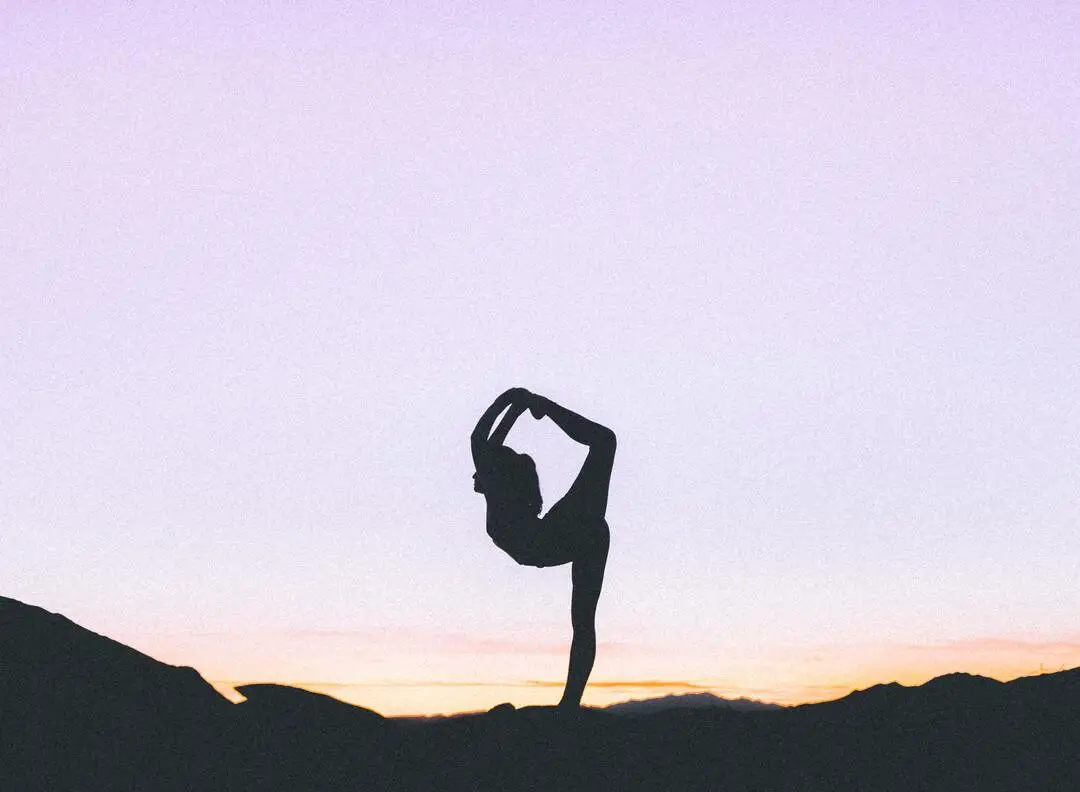
Aerial Yoga: An Inventive and Lively Practice
Aerial Yoga is a form of yoga that is both inventive and lively, utilizing suspended hammocks to provide support for the body during a variety of poses.
This innovative practice is renowned for its exceptional and imaginative movements, which are specifically designed to enhance the body’s strength, flexibility, and balance, while also fostering a sense of lightheartedness and amusement.
The suspended hammocks utilized in Aerial Yoga are instrumental in cultivating the unique movements and poses that distinguish this practice from other forms of yoga. These hammocks not only provide a new perspective on traditional yoga poses but also allow for a more profound stretch and greater flexibility, which can aid in injury prevention and recovery.
Aerial Yoga is a rigorous form of exercise that offers numerous benefits for the body and mind. This practice can improve overall physical fitness, increase muscle strength and endurance, and enhance balance and coordination.
Furthermore, the inverted positions and suspension provided by the hammocks can help to alleviate joint pressure and pain, while also increasing blood flow and circulation throughout the body.
Aerial Yoga is a practice that promotes a sense of playfulness and fun, which can have positive effects on mental health and well-being. The unique movements and poses offered by this practice can help to release tension and stress, foster creativity and self-expression, and cultivate a greater sense of self-awareness and self-confidence.
Overall, Aerial Yoga is a dynamic and imaginative practice that offers a plethora of physical and mental benefits.
By utilizing suspended hammocks and incorporating unique movements and poses, Aerial Yoga provides a fresh and exciting perspective on traditional yoga practice, encouraging practitioners to challenge themselves both physically and mentally while also having fun.
Karma Yoga: A Selfless and Service-Oriented Practice
Karma Yoga, an ancient practice, is well-known for its emphasis on selfless service, and it aims to instill compassion, humility, and gratitude in the practitioner. By executing actions with selfless and pure intentions, Karma Yoga facilitates the development of a sense of detachment from our ego, enabling us to connect with a profound sense of purpose and meaning in our lives.
Karma Yoga encourages us to engage in activities that serve others and the community without any expectations of reward or recognition.
This approach promotes a sense of altruism, helping us to transcend the limitations of our ego and connect with our higher self. Through Karma Yoga, we can cultivate a spirit of service, enabling us to lead a fulfilling life while helping others to grow and prosper.
The practice of Karma Yoga is rooted in the concept of dharma, which is often translated as duty or responsibility.
By fulfilling our responsibilities towards our family, society, and the environment, we can align ourselves with the universal flow of energy and contribute to the well-being of all beings. In this way, Karma Yoga helps us to establish harmony and balance in our lives, enabling us to live with a sense of purpose and fulfillment.
Karma Yoga is not just about performing physical actions; it also involves cultivating the right attitude toward life. A Karma Yogi approaches life with a spirit of detachment and non-attachment, recognizing that all actions have consequences but being unattached to the outcome.
This mindset enables us to act with clarity, efficiency, and effectiveness while avoiding the pitfalls of attachment, anxiety, and stress.
Karma Yoga is a selfless and service-oriented practice that aims to instill compassion, humility, and gratitude in the practitioner. By performing actions with selfless intentions and cultivating a spirit of service, we can connect with a deeper sense of purpose and meaning in our lives, and contribute to the well-being of all beings.
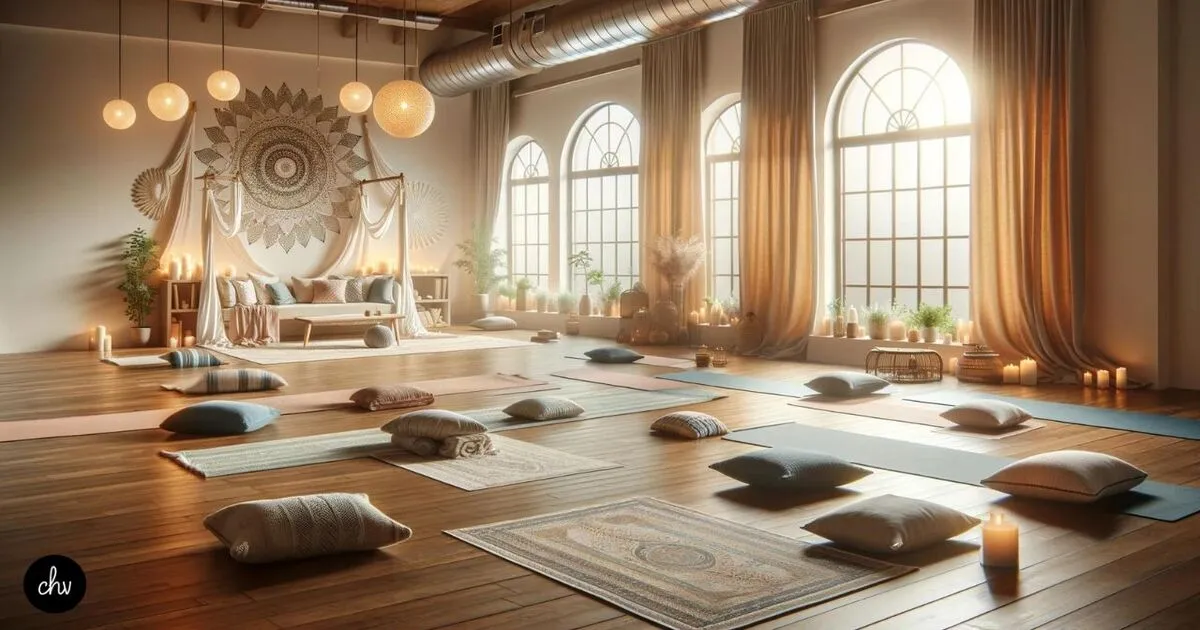
Jnana Yoga: Unlocking the Secrets of Self-Discovery and Personal Growth
Jnana Yoga is not your average yoga practice. It’s a fascinating and unique approach to self-discovery and personal growth that’s been around for centuries. This practice delves deep into the philosophical aspects of life, encouraging individuals to challenge their assumptions and engage in critical thinking.
Jnana Yoga is all about pursuing knowledge and wisdom through self-inquiry, reflection, and contemplation. And it’s a journey that can lead to a deeper level of understanding of both the self and the world around us.
But what makes Jnana Yoga so special? Let’s take a closer look at its core aspects:
The Pursuit of Knowledge and Wisdom At the heart of Jnana Yoga is the pursuit of knowledge and wisdom. But it’s not just about gaining knowledge from external sources. It’s also about exploring our own internal beliefs and assumptions. This practice encourages us to challenge our thinking and cultivate a deeper level of understanding.
Critical Thinking and Intellectual Development Jnana Yoga promotes critical thinking and intellectual development.
It’s a practice that encourages us to question, reason, and analyze, leading to greater clarity of thought and a new perspective on life. Through critical thinking, we can cultivate self-awareness and gain a deeper understanding of the world around us.
A Philosophical and Intellectual Approach to Self-Discovery Jnana Yoga is a philosophical and intellectual approach to self-discovery. It challenges us to look beyond conventional ways of thinking and explore the deeper meaning of life.
Through this pursuit of knowledge and wisdom, we gain a unique perspective on the world and our place in it.
Jnana yoga benefits: If you’re looking to gain clarity on your purpose in life, understand your thoughts and emotions better, break free from limiting beliefs and assumptions, or develop a more rational and logical approach to life, then Jnana Yoga may be just what you need. This practice can help you on your journey of self-discovery and personal growth.
So, are you ready to embark on this journey of self-discovery and pursue knowledge and wisdom through Jnana Yoga? It’s a fascinating and enriching practice that can lead to a deeper understanding of yourself and the world around you.
Don’t be afraid to challenge your assumptions and engage in critical thinking. You never know what you may discover on this journey of self-exploration.
Raja Yoga: A Royal and Integrative Practice
Raja Yoga is a comprehensive and regal form of yoga that combines various aspects of yoga, such as physical postures, controlled breathing, meditation, and philosophy. Its main focus is to unite and harmonize all elements of the individual to cultivate a sense of balance and wholeness.
Derived from the Sanskrit word “raja,” which means “royal,” Raja Yoga is considered the “king” of all yogas due to its ability to integrate the mind, body, and spirit. It emphasizes the practice of self-discipline, self-awareness, and self-realization through meditation and other yogic techniques.
The practice of Raja Yoga involves eight limbs or stages, each with its purpose and benefits. These limbs are Yama (ethical standards), Niyama (self-discipline), Asana (physical postures), Pranayama (breath control), Pratyahara (withdrawal of senses), Dharana (concentration), Dhyana (meditation), and Samadhi (enlightenment).
Raja Yoga is beneficial for people of all ages and abilities, as it promotes physical health, mental clarity, and emotional stability. It helps individuals manage stress, improve focus, and develop a deeper understanding of themselves and their place in the world.
Bhakti Yoga: An Esoteric and Heartfelt Discipline
Bhakti Yoga is an esoteric and heartfelt form of yoga that accentuates the cultivation of ardor, adoration, and submission to an entity of higher power. Bhakti Yoga is renowned for its emphasis on the heart and sentiments and is contrived to engender a sense of interconnection and devotion to the divine.
Unlike other types of yoga that focus on physical postures or mental concentration, Bhakti Yoga is more concentrated on the emotional and spiritual facets of the practitioner. The practice encourages the individual to engage in devotional acts such as chanting, singing, and meditation, which aid in cultivating a state of union with the divine.
Through the consistent practice of Bhakti Yoga, one can reach an elevated state of consciousness, whereby the heart and mind are purified, and the ego is transcended.
The individual becomes more attuned to the divine energy that surrounds them, and they begin to experience a sense of profound bliss and contentment that is difficult to express in words.
Bhakti Yoga is a transformative and soulful discipline that can lead to a deep sense of spiritual fulfillment and contentment. It is a practice that can be adopted by individuals of all backgrounds and belief systems who are seeking a more meaningful and purposeful existence.
Hot Yoga: A Bikram Yoga Form
Hot yoga, a type of yoga performed in sweltering environments, is classified into two distinct categories: Bikram and Vinyasa yoga.
The practice was popularized by the founder of Bikram Yoga, Bikram Choudhury, during the 1970s, and was derived from conventional hatha yoga. The high temperatures utilized in hot yoga were contrived to imitate the scorching heat of India.
As stated by the Yoga Journal, Bikram’s objective was to “rescue America through his yoga.” A standard Bikram hot Yoga class involves 26 movements, and two breathing exercises, and is executed in a space of 105 degrees Fahrenheit with a humidity level of 40%.
Instructors at Bikram Yoga employ a hands-on teaching method, often adjusting their student’s posture. It is imperative to note that only Bikram-trained instructors may teach Bikram yoga in designated Bikram studios.
The Benefits of Yoga
Each type of yoga offers unique benefits for the body, mind, and spirit. From improved physical health and flexibility to reduced stress and anxiety, the benefits of yoga are numerous and well-documented. Here are some of the key benefits that yoga can offer:
The Importance of Finding the Right Type of Yoga
When it comes to finding the right type of yoga, there is no one-size-fits-all approach. Each individual is unique, with their own physical, mental, and emotional needs, and it is important to find a type of yoga that resonates with your personal goals and aspirations.
Whether you are looking to improve your physical health, reduce stress and anxiety, or deepen your spiritual practice, there is a type of yoga that can help you achieve your goals.
By exploring the different types of yoga, and yoga studios you can get to know their unique benefits, you can find a practice that nourishes your body, mind, and spirit, and helps you discover a way of life that brings health, wellness, and inner peace.
Final Takeaway
Yoga, a practice of immense power and transformation, is replete with benefits that extend to the physical, mental, and spiritual realms. Whether you are a beginner or a seasoned expert, the world of yoga holds endless possibilities to explore.
By delving into the varied forms of yoga and their distinctive advantages, you can discover a practice that resonates with your aspirations and goals, paving the way for a way of life that ushers in good health, wellness, and inner tranquility.
Namaste:)


